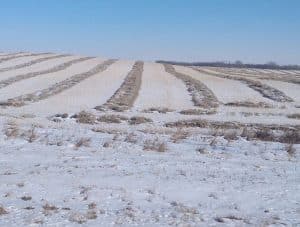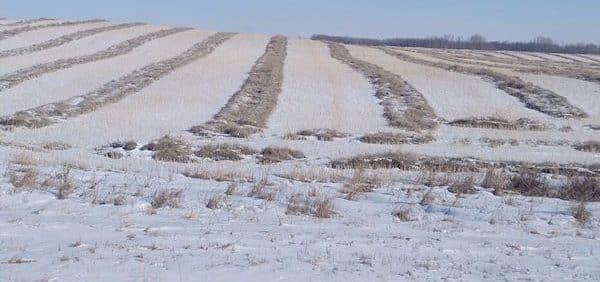Combining is the best way to remove canola still in the field. Quality will likely be down, but it will still be worth something. If canola isn’t too tough and ground is still frozen, it may be worth a try sooner than later — especially if soil moisture was high heading into winter.
A silver lining is that if harvesting high-moisture grain, warmer spring days should mean decent conditions for natural-air drying.
If you have tips or experiences we can add to this article, please email Jay Whetter at whetterj@canolacouncil.org.

Testing samples of over-wintered canola: The Canadian Grain Commission seeks samples of canola that over-wintered before harvest. These samples will be used for research to assess the impact of winter on canola quality. Each producer who submits samples will be sent their sample results. An overview of results, without names, will be posted online.
In addition to developing an understanding of the impact of snow on the end-use functionality of canola, results of this research will help ensure the Canadian canola industry continues to supply a consistent and dependable commodity to end-use customers.
To participate in this study and receive information about the quality of your canola crop, email Veronique Barthet (veronique.barthet@grainscanada.gc.ca) or Twylla McKendry (twylla.mckendry@grainscanada.gc.ca).

